By Jon P. Weimer, Colorado TU Director-At-Large, Communications Committee
This article was originally published in the 2017 Winter Edition of High Country Angler
Let us know your thoughts about the potential fishing increase with this short survey!
In the summer of 2016, Colorado Parks and Wildlife (CPW) conducted a series of 18 public meetings across the State, entitled Funding the Future. CPW anticipates budget shortfalls, and the meetings were conducted to get feedback from hunters and anglers on how best to stop the financial hemorrhaging and perhaps even enhance its coffers. Increasing hunting and fishing license fees for State residents has been proffered by the Agency as one possible option.
For more information from Colorado Parks and Wildlife, visit:
History of License Revenue
CPW Financial Sustainability
Funding the Future
Background
In 2011, the Division of Parks and Outdoor Recreation merged with the Division of Wildlife. Ostensibly, the merger would allow the new Agency—CPW—to capture some efficiencies through sharing resources, such as accounting and marketing, and position it to connect with the general public as a single organization. A prevalent rumor at the time was that the merger was enacted to bail out the Parks Division using Wildlife funds. This view, apparently, was a misconception. There are very specific Federal and State laws that require that Wildlife funds---which include hunting and fishing license fees-- be spent only for Wildlife purposes, while Park funds were to be spent only for Park purposes. It is important to note that although these two Divisions merged, each retains its own budget. It is also important to note the irony that Parks currently is in relatively good shape financially. It is Wildlife that is hurting financially, and providing the impetus for CPW to plead for more revenue.
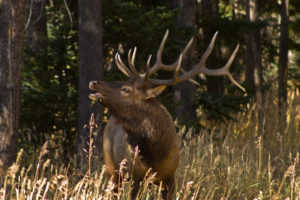 Current Status
Current Status
CPW has a user-pay, user-benefit funding mode; it does not receive General Fund revenue (i.e., taxpayer money). So, fish and wildlife conservation programs, as well as management of recreational lands, are primarily funded by hunters, anglers and park visitors, through sales of hunting and fishing licenses, habitat stamps, and park passes. More specifically, about 62 percent of the revenue generated by CPW comes from hunting and fishing license fees. Federal excise taxes levied on hunting and fishing equipment comprise 16 percent of the budget, and grants from Great Outdoors Colorado (GOCO) make up 12 percent of the revenue. Those Federal excise taxes are collected from makers of outdoor equipment which are returned to the State based on license numbers and geographic size. Any proposed increase in license fees must be approved through the Colorado legislature before they are finalized by the governor’s signature.
Presently, resident fishing licenses for adults (age 16 to 64) cost $26. A $10 habitat stamp is also required from adults (18 to 64 years). Licenses for seniors (age 65 and over) are provided free, although they must pay a $1 charge, $.25 of which goes for a search and rescue fee, and $.75 of which reflects a Public Education Advisory Council (CPEAC) fee.
Reasons for Budget Deficits
CPW’s Wildlife Management Division claims that, in recent years, it has faced substantial budget shortfalls which have resulted in the elimination of over 50 positions and $40 million from Wildlife budgets. Without increasing revenues, CPW states that Wildlife Management will have to cut additional staff and core services, which could include reductions to wildlife and property management, biological research, access for hunting and fishing, as well as the closure of some reservoirs and fish hatcheries. CPW avers that, basically, for the past decade, its incoming revenue has been relatively stagnant while faced with increased costs, a larger mission, and more complex issues to manage.
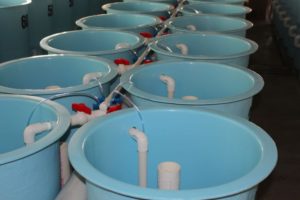 CPW is the largest owner of dams in Colorado and oversees 19 hatcheries in the State, where it raises 90 million fish annually for stocking rivers and lakes, and with limited funds it says it is falling behind on dam and hatchery maintenance. As examples of rising costs since 2005 – the last time resident fishing license fees were increased – CPW points to some specific examples: leasing water for hatcheries has increased 344 percent; fish food has risen 92 percent; and the cost of a fisheries work boat has increased 24 percent. CPW personnel indicate that there have been some major investments out of their control such as information technology and new Statewide accounting systems. They also point to new wildlife challenges with which they’ve had to contend such as whirling disease and invasion of aquatic nuisance species that have imposed unexpected costs. Then, of course, costs such as those associated with personnel, health care, and utilities have consistently increased during this time span as well.
CPW is the largest owner of dams in Colorado and oversees 19 hatcheries in the State, where it raises 90 million fish annually for stocking rivers and lakes, and with limited funds it says it is falling behind on dam and hatchery maintenance. As examples of rising costs since 2005 – the last time resident fishing license fees were increased – CPW points to some specific examples: leasing water for hatcheries has increased 344 percent; fish food has risen 92 percent; and the cost of a fisheries work boat has increased 24 percent. CPW personnel indicate that there have been some major investments out of their control such as information technology and new Statewide accounting systems. They also point to new wildlife challenges with which they’ve had to contend such as whirling disease and invasion of aquatic nuisance species that have imposed unexpected costs. Then, of course, costs such as those associated with personnel, health care, and utilities have consistently increased during this time span as well.
Possible Solutions for Reducing Budget Deficit
Resident License Fee Increase: During the course of CPW’s Funding for Wildlife series of public meetings, the Agency discussed, and received from participants, a number of proposed solutions to remedy the budget deficit but invariably, possible license fee increases loomed large. At these meetings, CPW personnel attempted to explain the Agency’s budget situation, detailing what it had done recently to address shortfalls in revenue, and providing a forecast of how CPW might address its programs. CPW indicated that in order to maintain the current wildlife programs and restore or add a slate of new programs requested by stakeholders would, essentially, require doubling the price of most State hunting and fishing licenses. This calculation, as might be expected, received emphasis from the media and stakeholders, although CPW insisted that the Agency had NOT proposed such an increase. However, even CPW Director, Bob Broscheid, admitted that a license increase must be considered.
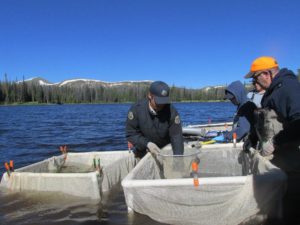 Regarding fishing licenses, the price increment in resident fishing licenses that has been bandied about most often at these meetings was a hike for adults from $26 to $50, almost a 100 percent increase. If such an increase was approved, CPW discussed whether or not it should be implemented in one year or, perhaps, in stages over a 4 to 5 year time span. Whatever price increase instituted, if any, should have a sound rationale if it’s going to receive legislative approval. CPW might look at the price increases that other states have adopted, or possibly the price increase could be based on some econometric modeling derived from results obtained in a “willingness to pay” survey. In addition to holding 18 public meetings this past summer, CPW send post cards to 3,000 randomly chosen resident license holders (half hunters, half anglers) to ask if they supported increasing license prices. CPW also gathered input from an online public comment form on its website regarding people’s willingness to pay more for a fishing/hunting license.
Regarding fishing licenses, the price increment in resident fishing licenses that has been bandied about most often at these meetings was a hike for adults from $26 to $50, almost a 100 percent increase. If such an increase was approved, CPW discussed whether or not it should be implemented in one year or, perhaps, in stages over a 4 to 5 year time span. Whatever price increase instituted, if any, should have a sound rationale if it’s going to receive legislative approval. CPW might look at the price increases that other states have adopted, or possibly the price increase could be based on some econometric modeling derived from results obtained in a “willingness to pay” survey. In addition to holding 18 public meetings this past summer, CPW send post cards to 3,000 randomly chosen resident license holders (half hunters, half anglers) to ask if they supported increasing license prices. CPW also gathered input from an online public comment form on its website regarding people’s willingness to pay more for a fishing/hunting license.
In economics, there’s a concept called price elasticity. Price elasticity has many facets to it but, basically, it refers to determining what percent-increase in the price of a product or service will lead to optimal revenue, recognizing that as prices increase the numbers of customers willing to buy a product decreases. Very simply, one is looking for that price “sweet spot” that will lead to the most revenue. If your price falls below that sweet spot, you won’t obtain as much revenue as possible; however, if you overshoot that sweet spot, you could actually lose revenue because a large number of your previous customers decline to buy your product. Retail outlets have the luxury and flexibility to continually change prices, looking for that sweet spot. Government agencies don’t have that luxury---they make a decision that they have to live with for a while.

The $26 to $50 price hike in resident fishing license fees that has been discussed may be tolerable to a certain segment of the angling population, but not to another that may feel that such an increment is too steep a hike, and a number of anglers may simply stop purchasing a license. Obviously, it’s a complex and important decision that CPW has to make, requiring a great deal of deliberation. CPW has also discussed at these public meetings the idea that, in order to avoid further price hikes that are perceived as too steep, the Agency may attempt to secure legislative approval to tie resident angling license fees to the Consumer Price Index (CPI), a price structure that would basically mirror that for out-of-State angling/hunting licenses which are indexed to the CPI, usually resulting in small annual increases to keep up with inflation.
In addition to possibly raising the resident fishing license fees for adults, CPW is also considering levying a license fee for seniors who, as mentioned earlier in this article, are currently charged $1. Seniors account for approximately 20 percent of the State’s annual license purchases. In 2015, CPW issued 85,510 senior fishing licenses. None of these senior licenses count toward the license numbers that determine Colorado’s share of Federal excise taxes; reinstating a senior fishing license fee would thus increase Colorado’s Federal funds as well as generating dollars directly from sales. Further, it costs about $1.5 million annually just to print the licenses – making the status quo a net financial loss. Thus, the Agency sees an opportunity to further enhance revenue by requiring seniors to buy fishing licenses, although no specific price structure has been discussed in any detail for this demographic group.
CPW considers an increase in both hunting and fishing licenses to be a feasible means of offsetting, at least in part, its financial difficulties. CPW claims that if the current fee structure remains, and no other fund-raising and/or cost cutting measures are instituted, the Agency will need approximately $15-20 million additional each year to maintain current operations, and up to $36 million to implement additional programs that hunters and anglers have indicated are important to wildlife management and conservation in the State – such as expanded access or restoring “Fishing is Fun” grants to historic levels. As mentioned earlier, after public comments are received and analyzed, the Agency must approach the legislature to ask for a bill approving any resident license fee increase. Undoubtedly, CPW hopes to get a vote of confidence from the hunting and angling public that would help persuade legislators.
Other Possible Solutions: In addition to, or in lieu of, raising resident license fees, the Agency has sought to broaden its sources of funding, looking for opportunities to bring in new revenue. For example, in the series of public meetings sponsored by CPW, participants suggested that there is a much larger pool of public land users that exist beyond hunters and anglers that might be able to help fund CPW. Why, they ask, are hunters and anglers being asked to pay more while others who use public land, such as hikers, birdwatchers, and photographers are exempt?
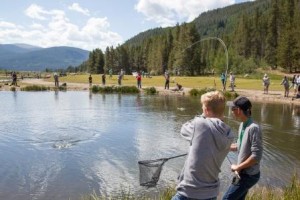
It was also suggested at these public meetings that the general public can purchase a Habitat Stamp and/or contribute money via the Non-Game and Endangered Wildlife Fund income box checkoff on their Colorado tax form to raise money for wildlife conservation—but that these venues may not be generally known and could use a massive publicity push.
Further questions were raised at these meetings about whether CPW in general, or Wildlife Management in particular, could initiate additional cost-cutting measures. CPW, as you might expect, indicates that it has already initiated a number of efficiencies to offset declines in revenue, along with implementing significant reductions in program and operation expenses. More cuts in funding, according to CPW, would lead to further reduction to popular and important “Fishing is Fun”, Wetland, Boating and Habitat Protection grants, the Aquatic Nuisance Species Program and, as mentioned earlier, a reduction in capital improvement projects such as repairing hatchery runways and maintenance of CPW-owned dams.
A possible ray of hope for additional funding is the proposed “Recovering America’s Wildlife Act” (H.R. 5650), which would direct approximately $1.3 billion in federal revenue from energy and mineral development toward wildlife conservation efforts across the nation. If this legislation were to pass at the Federal level, it should bring significant additional revenue for meeting Colorado’s fish and wildlife needs. At the time this writing, no Congressional action had been taken on this proposed legislation.
In short: CPW states that the basic problem is that revenue is essentially fixed at 2005 levels, while operating costs have continued to rise, so that budget cuts and program elimination are the only tools available to balance the budget. Colorado’s natural resources, according to CPW, are experiencing the pressure of population growth and increasingly fragmented habitat. A key factor in maintaining financial sustainability in the long run, they argue, will be the ability to increase license fees and continue to adjust them on a regular basis to offset inflation – a step they believe will be needed if Colorado is to remain a premiere destination for outdoor activities.
 watersheds to be at normal levels in order to flourish. Dissolved oxygen (DO) is fundamental to aquatic life. With higher levels of snowpack, there is more capability for dissolved oxygen in water due to higher water levels and colder temperatures. Cold water can hold more DO than warm water. Higher DO levels are achieved when water levels and flow rates are high and where the water is aerated in the rapids.
watersheds to be at normal levels in order to flourish. Dissolved oxygen (DO) is fundamental to aquatic life. With higher levels of snowpack, there is more capability for dissolved oxygen in water due to higher water levels and colder temperatures. Cold water can hold more DO than warm water. Higher DO levels are achieved when water levels and flow rates are high and where the water is aerated in the rapids.

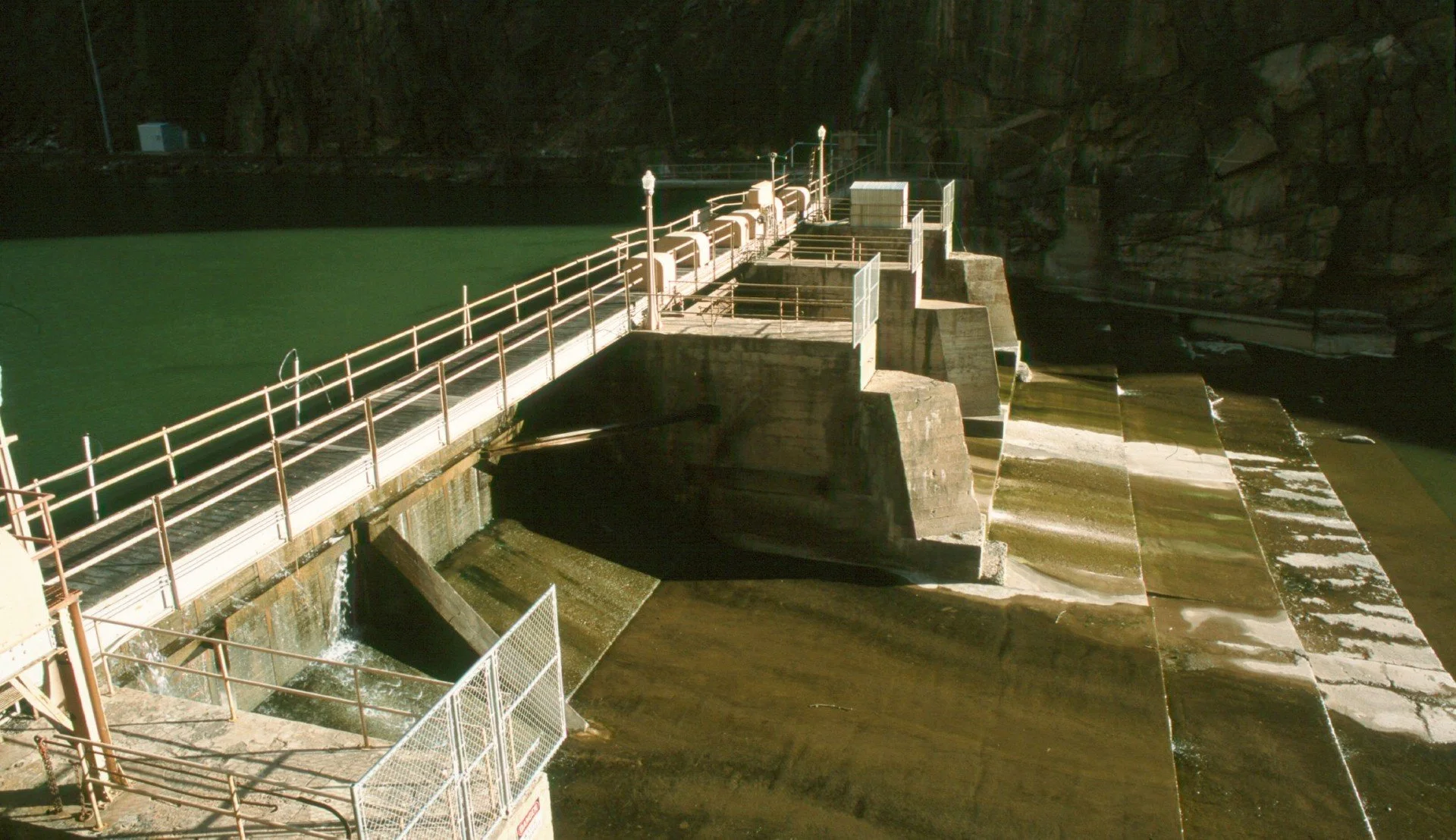
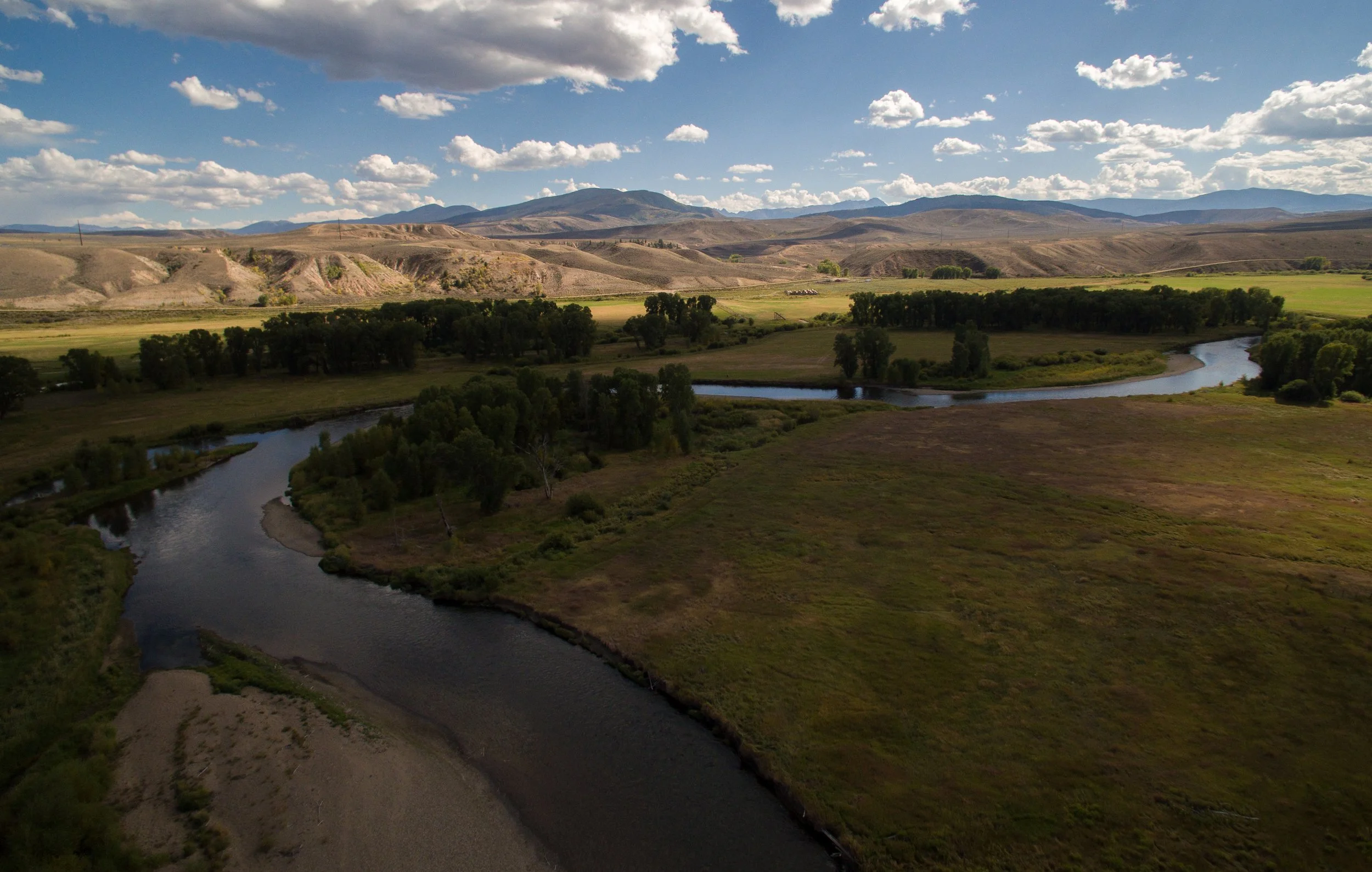
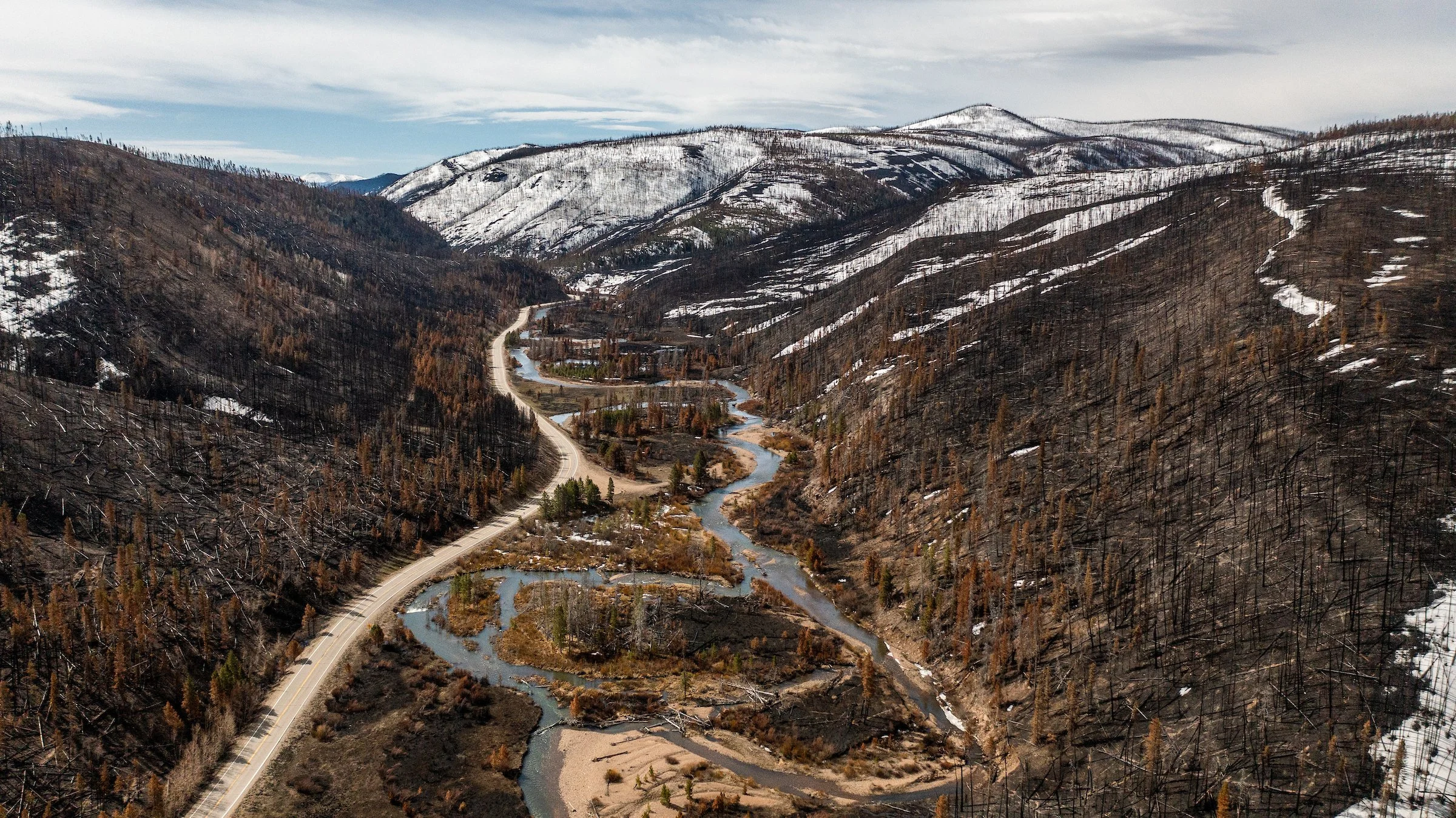

 Current Status
Current Status CPW is the largest owner of dams in Colorado and oversees 19 hatcheries in the State, where it raises 90 million fish annually for stocking rivers and lakes, and with limited funds it says it is falling behind on dam and hatchery maintenance. As examples of rising costs since 2005 – the last time resident fishing license fees were increased – CPW points to some specific examples: leasing water for hatcheries has increased 344 percent; fish food has risen 92 percent; and the cost of a fisheries work boat has increased 24 percent. CPW personnel indicate that there have been some major investments out of their control such as information technology and new Statewide accounting systems. They also point to new wildlife challenges with which they’ve had to contend such as whirling disease and invasion of aquatic nuisance species that have imposed unexpected costs. Then, of course, costs such as those associated with personnel, health care, and utilities have consistently increased during this time span as well.
CPW is the largest owner of dams in Colorado and oversees 19 hatcheries in the State, where it raises 90 million fish annually for stocking rivers and lakes, and with limited funds it says it is falling behind on dam and hatchery maintenance. As examples of rising costs since 2005 – the last time resident fishing license fees were increased – CPW points to some specific examples: leasing water for hatcheries has increased 344 percent; fish food has risen 92 percent; and the cost of a fisheries work boat has increased 24 percent. CPW personnel indicate that there have been some major investments out of their control such as information technology and new Statewide accounting systems. They also point to new wildlife challenges with which they’ve had to contend such as whirling disease and invasion of aquatic nuisance species that have imposed unexpected costs. Then, of course, costs such as those associated with personnel, health care, and utilities have consistently increased during this time span as well. Regarding fishing licenses, the price increment in resident fishing licenses that has been bandied about most often at these meetings was a hike for adults from $26 to $50, almost a 100 percent increase. If such an increase was approved, CPW discussed whether or not it should be implemented in one year or, perhaps, in stages over a 4 to 5 year time span. Whatever price increase instituted, if any, should have a sound rationale if it’s going to receive legislative approval. CPW might look at the price increases that other states have adopted, or possibly the price increase could be based on some econometric modeling derived from results obtained in a “willingness to pay” survey. In addition to holding 18 public meetings this past summer, CPW send post cards to 3,000 randomly chosen resident license holders (half hunters, half anglers) to ask if they supported increasing license prices. CPW also gathered input from an online public comment form on its website regarding people’s willingness to pay more for a fishing/hunting license.
Regarding fishing licenses, the price increment in resident fishing licenses that has been bandied about most often at these meetings was a hike for adults from $26 to $50, almost a 100 percent increase. If such an increase was approved, CPW discussed whether or not it should be implemented in one year or, perhaps, in stages over a 4 to 5 year time span. Whatever price increase instituted, if any, should have a sound rationale if it’s going to receive legislative approval. CPW might look at the price increases that other states have adopted, or possibly the price increase could be based on some econometric modeling derived from results obtained in a “willingness to pay” survey. In addition to holding 18 public meetings this past summer, CPW send post cards to 3,000 randomly chosen resident license holders (half hunters, half anglers) to ask if they supported increasing license prices. CPW also gathered input from an online public comment form on its website regarding people’s willingness to pay more for a fishing/hunting license.

 Led by an array of partners representing conservation interests, agriculture, local government, water providers, state agencies, and landowners, the Headwaters Project will create a bypass channel to reconnect the Colorado River at Windy Gap Reservoir, make channel and habitat improvements downstream of the bypass near Kremmling, Colorado, and improve irrigation systems as well as soil and water quality.
Led by an array of partners representing conservation interests, agriculture, local government, water providers, state agencies, and landowners, the Headwaters Project will create a bypass channel to reconnect the Colorado River at Windy Gap Reservoir, make channel and habitat improvements downstream of the bypass near Kremmling, Colorado, and improve irrigation systems as well as soil and water quality. Back in the 1960’s planners thought that Aspen’s population (1,101 in 1960) would reach 30,000 by the end of the century and that additional water supplies would be necessary. Aspen’s population didn’t grow much. In 2000 it was up to 5,914 and by 2010 had added less than a thousand more. Looking forward, the City’s population isn’t expected to grow much more over the next 60 years either, yet Aspen continues to hang on to the notion that they might, someday, need these destructive dams and reservoirs.
Back in the 1960’s planners thought that Aspen’s population (1,101 in 1960) would reach 30,000 by the end of the century and that additional water supplies would be necessary. Aspen’s population didn’t grow much. In 2000 it was up to 5,914 and by 2010 had added less than a thousand more. Looking forward, the City’s population isn’t expected to grow much more over the next 60 years either, yet Aspen continues to hang on to the notion that they might, someday, need these destructive dams and reservoirs.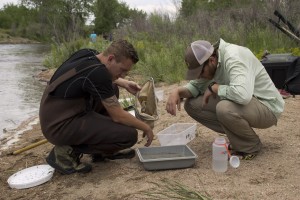
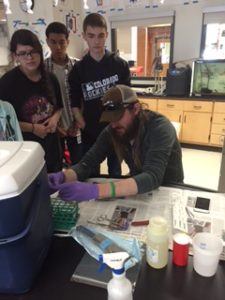 In Colorado, there are currently six active tanks involved with the TIC program. These classrooms are located all over Colorado. CTU helps these classrooms by assisting in obtaining trout eggs, coordinating supplies, and helping with the required disease testing prior to the release.
In Colorado, there are currently six active tanks involved with the TIC program. These classrooms are located all over Colorado. CTU helps these classrooms by assisting in obtaining trout eggs, coordinating supplies, and helping with the required disease testing prior to the release.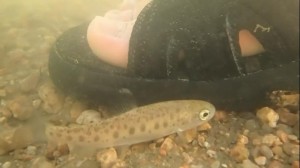 Parents have also gotten into the fun through TIC. "While the program is targeted at the kids, the teachers involved have noted that many of the parents have been excited about the tanks as well, not only keeping up with the egg/fry progress through their children, but visiting the tanks during parent-teacher conferences, involving the whole family in the educational process," said Bloodworth.
Parents have also gotten into the fun through TIC. "While the program is targeted at the kids, the teachers involved have noted that many of the parents have been excited about the tanks as well, not only keeping up with the egg/fry progress through their children, but visiting the tanks during parent-teacher conferences, involving the whole family in the educational process," said Bloodworth.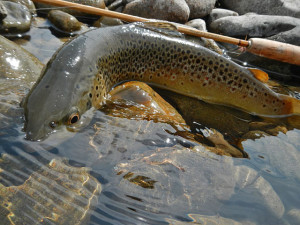 1. Use Yarn- many of you reading this may have heard this recommendation before, but it bears repeating. I feel that strongly about it. Simply put, yarn indicators are WAY more sensitive than plastic bobber-style indicators. Fish this time of year can be pretty lethargic (compared to summer) and typically won’t eat your flies with much aggression. Oftentimes your yarn won’t even dunk underwater but rather just ‘pause’ or ‘lean over’ when a fish strikes. If you’ve never used yarn indicators before, be prepared to be amazed with the sensitivity you’ll get. Side note- tips for yarn success- carry several and liberally apply some fly floatant before starting the day. Be prepared to dry off your indicator every couple hours and reapply. If you decide that your indicator is too waterlogged after a few hours, simply swap it out for a fresh one. While I realize these do require a little more maintenance than a thingamabobber, the fact that it leads to more fish in the net throughout the day is always worth it to me.
1. Use Yarn- many of you reading this may have heard this recommendation before, but it bears repeating. I feel that strongly about it. Simply put, yarn indicators are WAY more sensitive than plastic bobber-style indicators. Fish this time of year can be pretty lethargic (compared to summer) and typically won’t eat your flies with much aggression. Oftentimes your yarn won’t even dunk underwater but rather just ‘pause’ or ‘lean over’ when a fish strikes. If you’ve never used yarn indicators before, be prepared to be amazed with the sensitivity you’ll get. Side note- tips for yarn success- carry several and liberally apply some fly floatant before starting the day. Be prepared to dry off your indicator every couple hours and reapply. If you decide that your indicator is too waterlogged after a few hours, simply swap it out for a fresh one. While I realize these do require a little more maintenance than a thingamabobber, the fact that it leads to more fish in the net throughout the day is always worth it to me.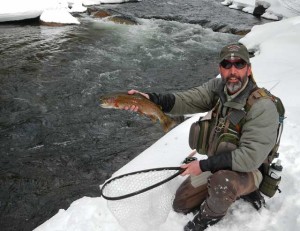 Whenever you approach a likely looking area, always make it a point to fish it while keeping your wading boots on dry ground. Avoiding splashing around, crunching rocks, and in general- disturbing the water with your steps- is always going to leave the fish feeling much more at ease and in turn- more eager to eat your flies (this rule should actually be applied year round).
Whenever you approach a likely looking area, always make it a point to fish it while keeping your wading boots on dry ground. Avoiding splashing around, crunching rocks, and in general- disturbing the water with your steps- is always going to leave the fish feeling much more at ease and in turn- more eager to eat your flies (this rule should actually be applied year round).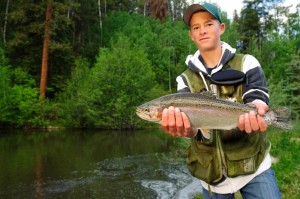 5. Watch the bubbles- we’ve already talked about indicators and weight, and I firmly believe that one of the biggest reasons people don’t catch as many fish as they should is that they’re simply not getting down to them. Next time your nymphing make sure to keep an eye on the bubbles on the surface. What are they doing? Are they moving the same speed as your indicator? If so, this is a dead giveaway you’re not getting down to the fish. Most fish this time of year are sitting very close to the bottom. The water on the bottom of the river is moving slower than the water on the surface. If you’re indicator is floating the same speed as the bubbles on the surface, this means that you’re not getting down to the fish. Simple as that. The goal is to always have your indicator floating SLOWER than the bubbles on the surface. This can quickly be achieved by adding a little more depth and/or weight to your rig. If you’ve never paid attention to this before I think you’ll be amazed at how much of a difference it makes and how quickly you are now able to dial in your rig, ultimately achieving a perfect drift to the fish!
5. Watch the bubbles- we’ve already talked about indicators and weight, and I firmly believe that one of the biggest reasons people don’t catch as many fish as they should is that they’re simply not getting down to them. Next time your nymphing make sure to keep an eye on the bubbles on the surface. What are they doing? Are they moving the same speed as your indicator? If so, this is a dead giveaway you’re not getting down to the fish. Most fish this time of year are sitting very close to the bottom. The water on the bottom of the river is moving slower than the water on the surface. If you’re indicator is floating the same speed as the bubbles on the surface, this means that you’re not getting down to the fish. Simple as that. The goal is to always have your indicator floating SLOWER than the bubbles on the surface. This can quickly be achieved by adding a little more depth and/or weight to your rig. If you’ve never paid attention to this before I think you’ll be amazed at how much of a difference it makes and how quickly you are now able to dial in your rig, ultimately achieving a perfect drift to the fish!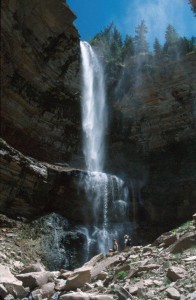

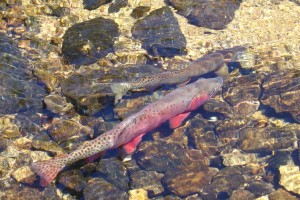
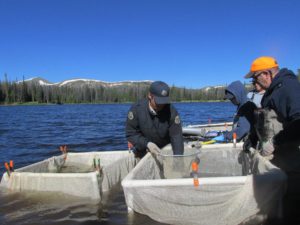 Colorado TU teamed up with Colorado Parks and Wildlife to reintroduce Greenback Cutthroat trout into their native watersheds all along the Front Range. Efforts this past year including spawning
Colorado TU teamed up with Colorado Parks and Wildlife to reintroduce Greenback Cutthroat trout into their native watersheds all along the Front Range. Efforts this past year including spawning 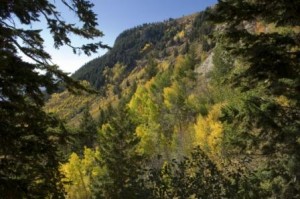
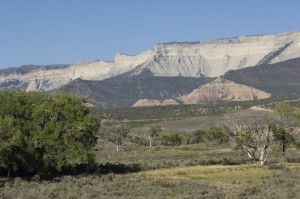 The MLP process is a new tool that promises to address some of that top-down, fragmented approach to public land management. To their credit, the BLM is listening and incorporating suggestions from local ranchers, conservation groups and elected officials into their leasing plan for South Park.
The MLP process is a new tool that promises to address some of that top-down, fragmented approach to public land management. To their credit, the BLM is listening and incorporating suggestions from local ranchers, conservation groups and elected officials into their leasing plan for South Park. The Roan Plateau is home to outstanding big game habitat and unique native trout like those pictured here. Trout Unlimited has been hard at work on the Roan for more than two decades, with many hundreds of volunteer hours invested by the Grand Valley Anglers chapter on habitat protection and improvement projects from instream structures to riparian fencing and replanting. TU also helped install a fish barrier to protect native cutthroat trout habitat being restored by Colorado Parks and Wildlife.
The Roan Plateau is home to outstanding big game habitat and unique native trout like those pictured here. Trout Unlimited has been hard at work on the Roan for more than two decades, with many hundreds of volunteer hours invested by the Grand Valley Anglers chapter on habitat protection and improvement projects from instream structures to riparian fencing and replanting. TU also helped install a fish barrier to protect native cutthroat trout habitat being restored by Colorado Parks and Wildlife. The Thompson Divide (including Thompson Creek pictured here) makes up more than 220,000 acres of federal land in Pitkin, Garfield, Gunnison and Mesa counties and contains some of Colorado's most productive habitat for big game, cutthroat trout and numerous other native species. The area is used by more than 10,000 resident and nonresident big game hunters every year and serves as the headwaters to some of Colorado’s most popular fisheries including the Roaring Fork, North Fork of the Gunnison, and Crystal River.
The Thompson Divide (including Thompson Creek pictured here) makes up more than 220,000 acres of federal land in Pitkin, Garfield, Gunnison and Mesa counties and contains some of Colorado's most productive habitat for big game, cutthroat trout and numerous other native species. The area is used by more than 10,000 resident and nonresident big game hunters every year and serves as the headwaters to some of Colorado’s most popular fisheries including the Roaring Fork, North Fork of the Gunnison, and Crystal River.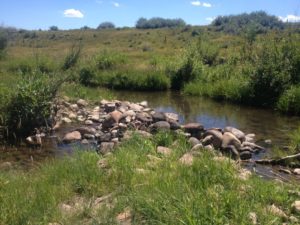 A small creek in southwest Wyoming just got a big upgrade. This November, a push-up style diversion was improved to a fish-friendly rock vane structure with a head-gate, reconnecting approximately 6 miles of habitat for the native Colorado River cutthroat trout that reside there. This project was unique in that it all began with the local school. Trout Unlimited partnered with the McKinnon Elementary School to study their home water, the Henry’s Fork River, through the Adopt-a-Trout program. This particular program involved tagging Colorado River cutthroat trout with telemetry tags and tracking their movement from 2014-2016. The students each got to “adopt” their own fish and follow it throughout the year. They learned a variety of river ecology lessons, including fish anatomy, macroinvertebrate identification, applying the scientific method, riparian ecosystems and many more. They also had to map where their fish moved using Google Earth.
A small creek in southwest Wyoming just got a big upgrade. This November, a push-up style diversion was improved to a fish-friendly rock vane structure with a head-gate, reconnecting approximately 6 miles of habitat for the native Colorado River cutthroat trout that reside there. This project was unique in that it all began with the local school. Trout Unlimited partnered with the McKinnon Elementary School to study their home water, the Henry’s Fork River, through the Adopt-a-Trout program. This particular program involved tagging Colorado River cutthroat trout with telemetry tags and tracking their movement from 2014-2016. The students each got to “adopt” their own fish and follow it throughout the year. They learned a variety of river ecology lessons, including fish anatomy, macroinvertebrate identification, applying the scientific method, riparian ecosystems and many more. They also had to map where their fish moved using Google Earth. Using two years of the Adopt-a-Trout data and an instream flow study that TU conducted on Beaver Creek, a major tributary, we discovered that there was a push-up dam near the confluence to the Henry’s Fork that was not allowing fish passage for a critical part of the year. None of the students’ fish were able to pass that point during the summer months. So, TU collaborated with the Lonetree Ranch to develop a fish-friendly diversion that would still allow them to receive their irrigation water, but would allow for fish passage during low flows. A head-gate was also installed so that they could turn the ditch off when they no longer needed to irrigate, leaving more water instream for the trout. Thanks to the funding provided by the Wyoming Landscape Conservation Initiative, the Wyoming Wildlife Natural Resource Trust and the Natural Resources Conservation Service, the project was able to be completed November 2016.
Using two years of the Adopt-a-Trout data and an instream flow study that TU conducted on Beaver Creek, a major tributary, we discovered that there was a push-up dam near the confluence to the Henry’s Fork that was not allowing fish passage for a critical part of the year. None of the students’ fish were able to pass that point during the summer months. So, TU collaborated with the Lonetree Ranch to develop a fish-friendly diversion that would still allow them to receive their irrigation water, but would allow for fish passage during low flows. A head-gate was also installed so that they could turn the ditch off when they no longer needed to irrigate, leaving more water instream for the trout. Thanks to the funding provided by the Wyoming Landscape Conservation Initiative, the Wyoming Wildlife Natural Resource Trust and the Natural Resources Conservation Service, the project was able to be completed November 2016.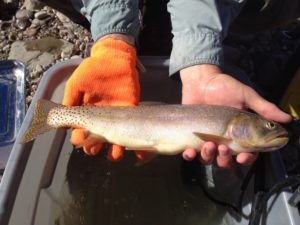 This is just the first of many projects that will be done along Beaver Creek to benefit native trout. Over the next year, the McKinnon students will be assisting with vegetation planting and monitoring on several sections right above the diversion to provide better cover and reduce stream temperatures during the summer months. Projects like these are not only reconnecting populations of native trout, but reconnecting kids to “their” fish and river.
This is just the first of many projects that will be done along Beaver Creek to benefit native trout. Over the next year, the McKinnon students will be assisting with vegetation planting and monitoring on several sections right above the diversion to provide better cover and reduce stream temperatures during the summer months. Projects like these are not only reconnecting populations of native trout, but reconnecting kids to “their” fish and river.
